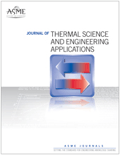
Journal of Thermal Science and Engineering Applications
Scope & Guideline
Transforming thermal knowledge into engineering solutions.
Introduction
Aims and Scopes
- Thermal Engineering Applications:
The journal emphasizes the application of thermal science principles in various engineering fields, including energy systems, HVAC, aerospace, and automotive industries. - Heat Transfer Mechanisms:
Research on fundamental and applied heat transfer mechanisms, including conduction, convection, radiation, and phase change phenomena, is a core focus area. - Numerical and Experimental Methods:
The journal publishes studies employing both experimental and numerical methods for analyzing thermal systems, enhancing the reproducibility and validation of results. - Innovative Cooling Technologies:
A significant area of interest is the development and optimization of novel cooling technologies, such as advanced heat exchangers, heat pipes, and thermal energy storage systems. - Sustainable Energy Solutions:
Research addressing sustainable energy solutions, including waste heat recovery, renewable energy utilization, and energy efficiency improvements, is actively promoted. - Material Characterization:
The journal also includes studies on the thermal properties of novel materials and nanofluids, which are critical for enhancing thermal performance in various applications.
Trending and Emerging
- Machine Learning in Thermal Applications:
The integration of machine learning techniques to optimize thermal systems and predict heat transfer performance is a rapidly growing trend, facilitating smarter system designs. - Nanofluids and Enhanced Heat Transfer:
Research on nanofluids and their application for enhanced heat transfer performance is increasingly important, reflecting a shift towards advanced materials in thermal management. - Thermal Management in Electronics:
With the rise of high-performance electronics, studies focused on thermal management solutions for electronic devices are becoming more prominent. - Sustainable Thermal Energy Systems:
There is a growing emphasis on sustainable thermal energy systems, including waste heat recovery and renewable energy integration, highlighting the journal's commitment to environmental issues. - Multiphase Flow Dynamics:
Research into the dynamics of multiphase flows, especially in microchannels and porous media, is trending due to its relevance in advanced cooling technologies and energy systems. - Thermal Analysis of Advanced Materials:
The thermal analysis of advanced materials, particularly those with unique thermal properties, is gaining attention as industries seek to improve thermal management solutions.
Declining or Waning
- Traditional Heat Exchanger Designs:
Research focusing on conventional heat exchanger designs is declining as newer, more efficient designs and materials gain popularity. - Single-Phase Heat Transfer Studies:
Interest in single-phase heat transfer studies has waned, with a notable shift towards more complex multi-phase interactions and nanofluid applications. - Basic Thermal Conductivity Studies:
Basic studies on thermal conductivity without innovative approaches or applications appear to be less prevalent, as researchers seek more applied and multidisciplinary perspectives. - Static Thermal Analysis:
Static thermal analysis methods are being overshadowed by dynamic and real-time thermal management studies, particularly in applications like electronics cooling. - Generalized Heat Transfer Correlations:
The use of generalized heat transfer correlations is decreasing, as researchers are increasingly focusing on tailored models that account for specific conditions and advanced materials.
Similar Journals

Journal of Nanofluids
Transforming Fluid Dynamics with Cutting-edge NanotechnologyJournal of Nanofluids, published by AMER SCIENTIFIC PUBLISHERS, is a leading international journal dedicated to the burgeoning field of nanofluid technology which bridges the areas of fluid dynamics and nanotechnology. With an ISSN of 2169-432X and E-ISSN of 2169-4338, this journal has established itself as a valuable resource for researchers and professionals in Mechanical Engineering and Chemical Engineering, particularly in the domains of fluid flow and transfer processes. Its prestigious standing is reflected in the 2023 Scopus rankings, positioning it in the 79th percentile for Mechanical Engineering and the 78th percentile for Fluid Flow and Transfer Processes. Although coverage has been discontinued in Scopus since 2021, the journal maintains a Q2 category ranking in both relevant fields, emphasizing its commitment to high-quality and impactful research dissemination. This journal aims to foster innovation and collaboration among scientists and engineers worldwide, providing a platform for groundbreaking research, reviews, and discussions on nanofluids, their properties, and applications. As an essential addition to the library of any researcher or student vested in advanced fluid dynamics, the Journal of Nanofluids serves as a pivotal conduit for advancing knowledge and technology in this exciting and evolving field.

JOURNAL OF ENHANCED HEAT TRANSFER
Elevating Standards in Mechanical Engineering and Fluid DynamicsThe JOURNAL OF ENHANCED HEAT TRANSFER, published by BEGELL HOUSE INC, is a prominent resource for researchers and professionals in the fields of mechanical engineering, fluid flow and transfer processes, and condensed matter physics. With a history spanning from 1993 to 2024, this journal offers a platform for disseminating cutting-edge research and innovations that enhance our understanding of heat transfer phenomena. Although it operates under a traditional subscription model, its impressive standing is underscored by its Scopus rankings—positioned within the 59th percentile for Mechanical Engineering and 58th percentile for Fluid Flow and Transfer Processes. Additionally, it holds Q2 and Q3 categorizations in relevant fields, reflecting its importance in advancing knowledge and applications in heat transfer technology. This journal effectively bridges the gap between theoretical insights and practical solutions, making it an indispensable tool for academics, industrial practitioners, and students eager to explore advancements in thermal management and efficiency.
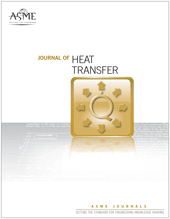
JOURNAL OF HEAT TRANSFER-TRANSACTIONS OF THE ASME
Unveiling Cutting-Edge Discoveries in Thermal Science.JOURNAL OF HEAT TRANSFER-TRANSACTIONS OF THE ASME, with ISSN 0022-1481 and E-ISSN 1528-8943, is a leading publication in the field of heat transfer, mechanical engineering, and related disciplines, published by the renowned American Society of Mechanical Engineers (ASME). This esteemed journal, which has been in circulation since 1945, provides a platform for novel research findings and reviews that the mechanical engineering community can rely upon, contributing significantly to the advancement of knowledge in heat transfer processes. The journal is recognized for maintaining a strong impact in several categories, attaining Q2 quartile rankings in Condensed Matter Physics, Mechanical Engineering, and Mechanics of Materials, reflecting its influential role in shaping scientific dialogues. With a commendable Scopus ranking, including a percentile of 63rd in Mechanical Engineering, it attracts submissions from leading researchers and industry professionals alike. Although access options are currently undergoing changes, the commitment to disseminating cutting-edge research remains steadfast. Gathering insights from historical and contemporary studies, the JOURNAL OF HEAT TRANSFER stands as a vital resource for those aiming to innovate in heat transfer technologies and methodologies.

International Journal of Heat and Technology
Transforming Knowledge into Practical SolutionsThe International Journal of Heat and Technology is a premier academic publication dedicated to the dissemination of innovative research in the fields of thermal engineering, fluid mechanics, and condensed matter physics. Published by the INT INFORMATION & ENGINEERING TECHNOLOGY ASSOCIATION and based in Italy, this journal has been a significant resource for researchers and professionals since its inception in 1983, with a commitment to advancing knowledge until 2024. With an impact factor that reflects its relevance, the journal encompasses diverse topics within its scope, bridging gaps between theoretical research and practical applications. Although currently not open access, the journal provides valuable insights into the nuances of heat transfer, flow dynamics, and material properties, making it a critical reference for academia and industry alike. The journal's Scopus rankings position it within the competitive landscape of chemical and mechanical engineering, highlighting its contribution to advancing these fields. We invite scholars, professionals, and students to engage with the rich content provided within its pages, to foster a deeper understanding of heat and technology in our rapidly evolving world.

INTERNATIONAL JOURNAL OF HEAT AND FLUID FLOW
Pioneering Research in Heat Transfer and Fluid FlowFounded in 1979, the INTERNATIONAL JOURNAL OF HEAT AND FLUID FLOW is a premier publication in the fields of mechanical engineering, fluid dynamics, and heat transfer, published by Elsevier Science Inc. With an impressive impact factor and ranking in the Q1 category for Mechanical Engineering and Q2 for Condensed Matter Physics and Fluid Flow and Transfer Processes, this journal is highly regarded for its rigorous peer-reviewed articles that contribute significantly to the advancement of knowledge in these critical areas. Researchers, professionals, and students can access cutting-edge studies that explore the intricacies of thermal and fluid systems, ensuring they stay at the forefront of scientific exploration. The Scopus rankings further affirm its role as a leading source of impactful research, with significant placements in crucial academic categories. Join an active community of scholars committed to innovation and excellence in the exploration of heat and fluid flow phenomena.
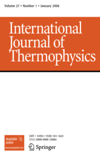
INTERNATIONAL JOURNAL OF THERMOPHYSICS
Exploring the Frontiers of Thermal ScienceInternational Journal of Thermophysics, published by Springer/Plenum Publishers, is a premier platform for the dissemination of high-quality research in the field of thermophysics, particularly focusing on the intricate relationships between thermal properties and their applications across various scientific disciplines. With an ISSN of 0195-928X and an E-ISSN of 1572-9567, the journal has established a respected presence in the academic community since its inception in 1980, with a converged publication timeline extending to 2024. Categorized in the Q2 quartile for Condensed Matter Physics in 2023 and maintaining impressive Scopus rankings—such as #39 in Fluid Flow and Transfer Processes and #178 in Condensed Matter Physics—the journal serves as a vital resource for researchers and professionals aiming to advance knowledge in the thermal sciences. Though not an open-access journal, it remains accessible through institutional subscriptions. The International Journal of Thermophysics is committed to fostering innovative research and interdisciplinary collaboration, ensuring that it remains at the forefront of thermophysical studies.
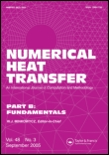
NUMERICAL HEAT TRANSFER PART B-FUNDAMENTALS
Elevating Knowledge in Numerical Heat Transfer.NUMERICAL HEAT TRANSFER PART B-FUNDAMENTALS, published by Taylor & Francis Inc, stands as a pivotal journal in the field of thermal sciences, focusing on the latest research in heat transfer methodologies and numerical simulation techniques. With an ISSN of 1040-7790 and an E-ISSN of 1521-0626, this journal has contributed significantly to advancing knowledge in various specialized areas, including numerical analysis, mechanics of materials, and condensed matter physics, evidenced by its diverse quartile rankings in 2023 across multiple categories. Although it operates under a traditional subscription model, its expansive influence is underscored by its convergence from 1989 to 2024, providing a rich historical context for contemporary research. Researchers, professionals, and graduate students will find this journal an invaluable resource for sharing and accessing critical developments in modeling and simulation techniques and their practical applications in engineering and applied sciences. Continuous engagement with innovative studies published in NUMERICAL HEAT TRANSFER PART B-FUNDAMENTALS ensures that readers remain at the cutting edge of their field.

Thermophysics and Aeromechanics
Advancing the Frontiers of Aerospace InnovationThermophysics and Aeromechanics, published by PLEIADES PUBLISHING INC, is an esteemed journal dedicated to advancing the fields of aerospace engineering, energy engineering, modeling and simulation, as well as nuclear and high energy physics. With an ISSN of 0869-8643 and E-ISSN 1531-8699, this journal serves as a vital platform for researchers and professionals working at the intersection of thermophysics and aeromechanics, delivering cutting-edge research, reviews, and case studies. Despite its current position in Quartile Q4 across multiple categories, including aerospace and energy engineering, it provides a unique opportunity for emerging ideas in these domains to gain visibility and impact. The journal's convergence of diverse scientific disciplines is critical for fostering innovation and technological advancements, making it an essential resource for students, practitioners, and academics alike. In this era of rapid scientific development, Thermophysics and Aeromechanics plays a pivotal role in disseminating knowledge and facilitating interdisciplinary collaboration among a global audience.
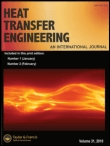
HEAT TRANSFER ENGINEERING
Fostering breakthroughs in heat transfer science and technology.HEAT TRANSFER ENGINEERING is a leading international journal published by Taylor & Francis Inc, dedicated to advancing the field of heat transfer and thermal engineering. With a strong focus on the key aspects of Condensed Matter Physics, Fluid Flow and Transfer Processes, and Mechanical Engineering, this journal covers a comprehensive range of topics from experimental studies to theoretical analysis, aiming to foster innovative research and practical applications. Since its inception in 1979 and continuing through 2024, the journal has established itself as an essential resource for researchers and industry professionals alike, reflected in its solid rankings within Scopus—holding a Q2 quartile classification in multiple engineering disciplines. Although not open access, the journal ensures broad accessibility through institutional subscriptions, making cutting-edge research readily available. With its rigorous peer-review process and commitment to quality, HEAT TRANSFER ENGINEERING plays a crucial role in shaping the future of thermal management solutions and engineering practices.
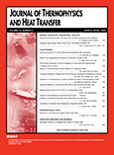
JOURNAL OF THERMOPHYSICS AND HEAT TRANSFER
Exploring Innovative Solutions in ThermophysicsJOURNAL OF THERMOPHYSICS AND HEAT TRANSFER, published by the American Institute of Aeronautics and Astronautics, serves as a vital platform for the dissemination of cutting-edge research in the fields of thermophysics and heat transfer. With an ISSN of 0887-8722 and an E-ISSN of 1533-6808, this journal has been pivotal in enhancing our understanding of heat transfer mechanisms since its inception in 1987, continuing through 2024. It occupies a noteworthy position in various academic categories, boasting Q2 rankings in both Fluid Flow and Transfer Processes and Mechanical Engineering, reflecting its significant contribution to the engineering and physical sciences community. Although it currently does not offer Open Access options, the journal’s repository of rigorous peer-reviewed articles remains accessible to researchers, professionals, and students eager to expand their knowledge and apply innovative findings in aerospace, condensed matter physics, and planetary sciences. Emphasizing both theoretical and experimental approaches, the JOURNAL OF THERMOPHYSICS AND HEAT TRANSFER remains an indispensable resource for advancing the frontiers of engineering and applied sciences.